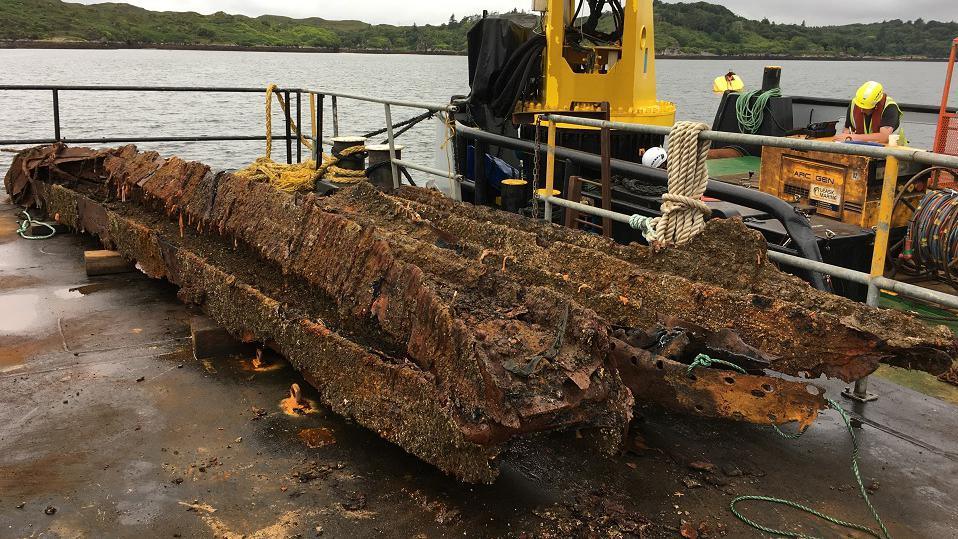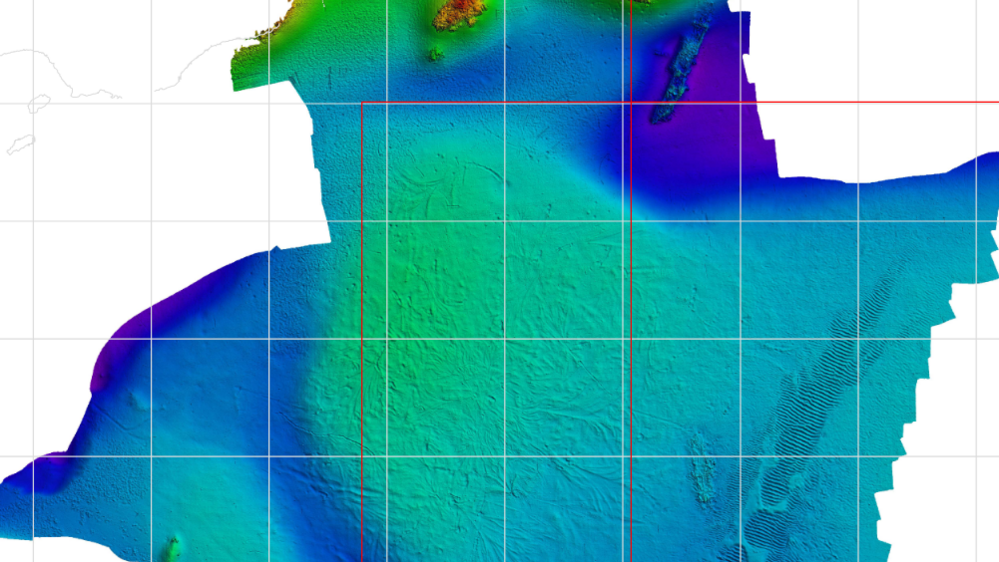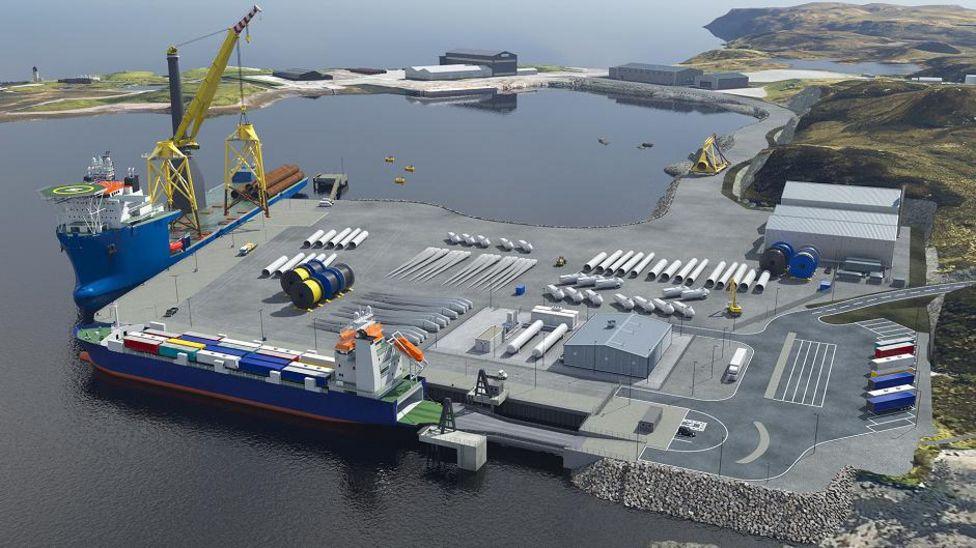Work begins on cutting up shipwrecks for new port

Steel from SS Portugal, one of two wrecks being cut up at Stornoway
- Published
Work has begun on breaking up two shipwrecks posing a hazard to a new deep water port being built in Stornoway on Lewis.
Dive teams are cutting up what is left of SS Portugal, a coal hulk which sank in 1953.
Work will also be done to reduce the size of the wreck of cargo ship SS Alabama, which dragged its anchor and ran aground in 1904.
Once completed the new £49m deep water port will be able to accommodate large cruise liners and cargo ships.

The 50-year-old SS Portugal was no longer sailing out in open waters and was being used to store coal when it broke its moorings and went down in Stornoway harbour, near the navigation channel.
It is lying in about 7m (23ft) of water but, until now, it has not affected the vessels coming and going from the existing piers.
However the harbour now needs to be deepened to allow much larger ships to berth.
Harbour master Alasdair Smith said SS Portugal was not fully intact and was heavily corroded which made it challenging to remove.
He said: “The metal was in very poor condition to begin with before it sank.
"Over the years there have been various efforts to try to remove and disperse it including blowing it up. So it is rotten old metal that is quite widely dispersed.
“The bottom of the hull is certainly still there and various pieces connected with it. It’s not an entire ship by any means but it is still a substantial amount of metal that is down there."

An illustration of the planned new deep water port
Contractor, building and civil engineering firm McLaughlin and Harvey, surveyed the wrecks to help plan their removal before dive teams started cutting up SS Portugal last week.
Contract manager Kevin Bell said they were making good progress on what was a difficult project next to a busy shipping channel.
He said “The divers are working in limited visibility underwater and even trying to locate the wrecks can sometimes be a bit of a challenge.
“They are burning the steel work up, hooking it on to cranes or grabs and recovering that to the surface.
“That is quite risky work that has to be well managed and done safety.”
A different approach will be taken to the SS Alabama.
The cargo ship, which had been sailing from Copenhagen to Baltimore when it came to grief in a storm, is lying on the seabed closer to the shore in shallower water about 3m (10ft) deep.
Parts of its structure nearest the surface will be cut off and dropped down next to the vessel to create a clearer depth of water.
Work on the shipwrecks could be completed by the start of October.
Related topics
- Published12 April 2022
